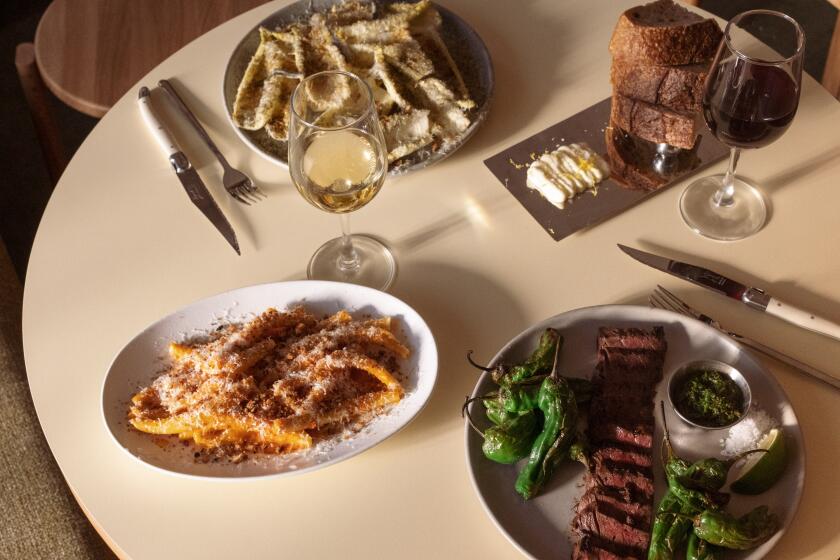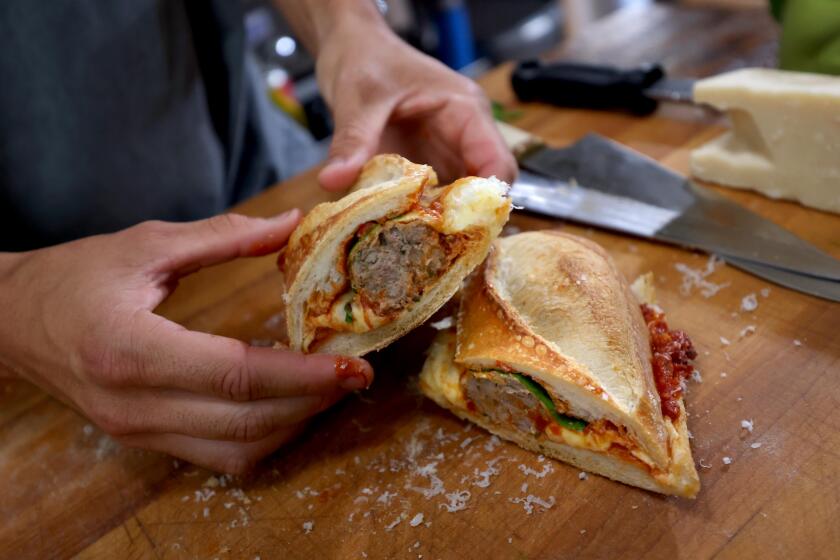FURNISHINGS : Skillet Skills and Function Dictate What to Buy
It’s tempting to buy a new set of cookware because of its design or color. It’s important, however, that cooks match the cookware material to the type of cooking they do.
For general-purpose range-top cooking, aluminum is a good choice. It is lightweight, conducts heat well and is easy to handle. The heavy-duty aluminum cookware used in restaurants is also available to the public and is virtually indestructible.
Cast-iron cookware is excellent for browning meats and for slow cooking. Iron holds heat and distributes it well. With proper care, this cookware can be preserved for a relatively long period. Rusting is a problem if the surface is not kept dry and oiled. Cast iron is quite heavy, so it can be difficult to handle.
Stainless steel is a poor conductor of heat. For that reason, the bottom of a stainless steel pot often incorporates aluminum or copper. Stainless steel works best for long, slow cooking.
For induction cooktops, in which heat is transferred via a magnetic field, the cookware must be magnetic. Cast iron and stainless steel (without copper or aluminum in the bottom) are ideal.
Ceramic-glass cookware conducts heat well and holds it well, too. Unlike metal cookware, ceramic glass can be used in a microwave oven. Many cooks prefer glass cookware because glass does not absorb food flavors. Leftovers or dishes prepared ahead can be stored in a glass container, which can go straight from the freezer or refrigerator to the cooking surface or oven.
Tin-lined copper cookware is often the gourmet cook’s choice. Copper is unmatched for cooking delicate sauces and foods that require quick, evenly distributed heat.
More to Read
Eat your way across L.A.
Get our weekly Tasting Notes newsletter for reviews, news and more.
You may occasionally receive promotional content from the Los Angeles Times.








